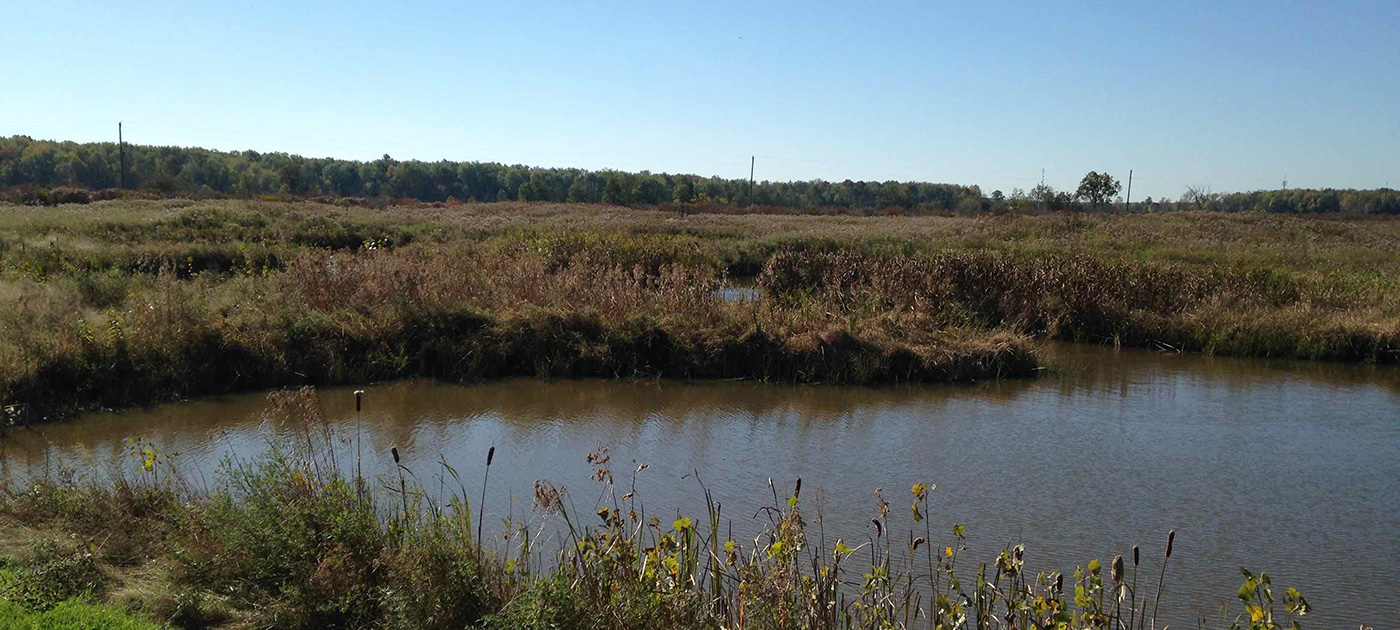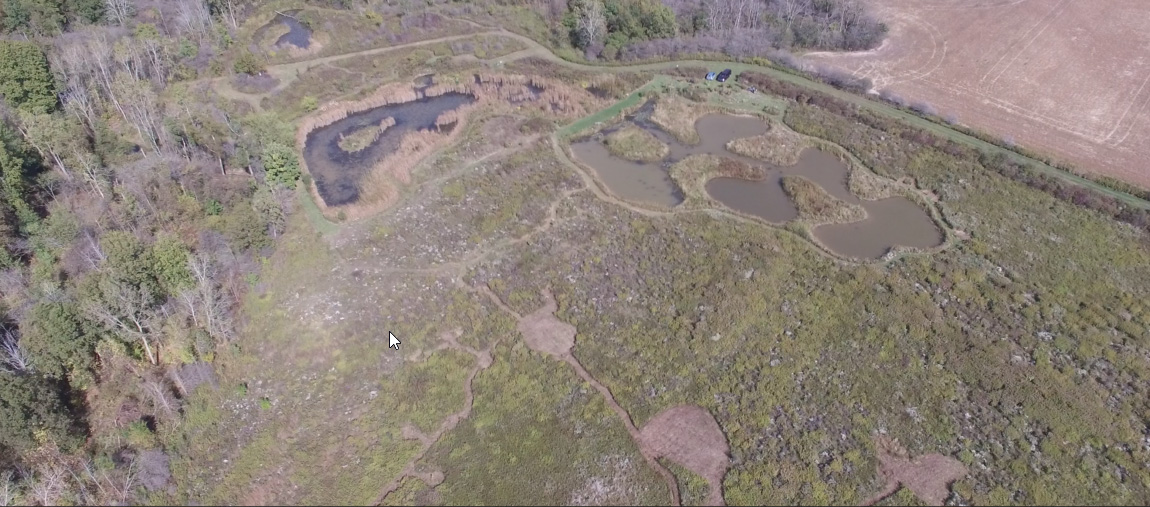Denise and Wayne Shephard purchased a rural property near Wilkesport in 1990 so that they could easily reach their very own wildlife oasis from their home in nearby Wallaceburg, and enjoy time with family in a natural setting. Booth Creek runs through the property from east to west. At the time of purchase, there were 38 acres of deciduous woodland north of the creek, and a 12-acre abandoned hay field to the south.
Over the years, the Shephards have created diverse wildlife habitat on their land south of the creek. In 1999, Wayne purchased a backhoe to create a pond near the creek’s edge, but after hearing naturalists talk about the value of wetlands, Wayne decided to construct approximately two acres of wetlands in the northeast area of the hay field in 2002. The following year, St. Clair Conservation Area provided three rows’ worth of Nannyberry, Downy Arrow-wood, Ninebark, Chokecherry, Silky and Red Osier Dogwoods, Elderberry and Staghorn Sumac that were planted on the field’s west, south and east border. Through Rural Lambton Stewardship, native prairie seeds and plugs were planted on one the wetland’s large berms, an area that continues years later to be a showcase prairie. The wetland area has become home to a variety of birds such as ducks, swallows, herons, Bluebirds, geese, and a variety of frogs and turtles. It has always been rewarding to watch the arrowheads, lilies, sedges and rushes appear in the wetland over time and diversify the plant community. It is truly a case of “build it and they will come.”
September 2013 saw a large wetland expansion thanks to Ducks Unlimited and prairie seeding on the berms by Ontario Nativescape. Following that project, Denise and Wayne wished to reforest the remaining part of the field with Carolinian tree species. In spring 2016, they planted tree seedlings in clusters in the target area, however it was a struggle to keep the seedlings from being overrun by grasses. Wayne decided to mow ten “crop circles”, each 12 meters in diameter, throughout the field in preparation for re-planting saplings in clusters.

Southwest view
In August 2017, the Shephards, Carolinian Canada and Quiet Nature Ltd. collaborated on a plan to accelerate the expansion of the woodland into the remaining portion of the field by planting 4-foot high saplings, as well as shrubs, within Wayne’s crop circles. Shrubs were included in the planting plan in order to provide microhabitat for wildlife, add more diversity to the vegetation community being created, and help protect the saplings from exposure, encroaching vegetation, and animal grazing.
Given the Brookston clay soil and the species composition of the existing woodland, Quiet Nature provided Silver Maple, Basswood, Bur Oak, Black Cherry, American Beech and Red Oak saplings, as well as Nannyberry, Winterberry, Gray Dogwood, Wild Black Currant, Downy Arrow-wood and Red-osier dogwood shrubs.
Towards the end of November 2017, the Shephards and a dozen volunteers gathered on the property to dig holes with hand shovels and plant. Luckily, the holes filled up with water as soon as they were being dug, which meant that watering the new plantings wasn’t necessary. Coco discs were placed at the base of each plant to minimize encroachment by grasses in the following spring.
Careful attention will be required during the first growing season to make sure that the new plantings do not dry out and that grasses are kept at bay by mowing. Carolinian Canada will be monitoring the health and growth of the saplings to determine which species are growing the best, and apply this knowledge to other woodland restoration projects in the future.
The Shephards enjoy their partnerships with Carolinian Canada, Ducks Unlimited, Ontario Nativescape and the Ontario Woodlot Association as well as the support from MNRF’s Managed Forest Tax Incentive Program.
Denise and Wayne have raised their two sons and grandson to value all that the world of nature has to offer, and have years of memories seeing the area nurture their appreciation for the native habitats they have created on their property. They are also grateful for all they have learned about flora and fauna identification, inventory taking, seed and plant gathering and habitat enhancement, all of which has provided a rewarding hobby of a scientific nature. As dedicated naturalists, they thoroughly enjoy spending time at their property, whether it be in the woods or out front hiking around the wetlands. There is so much wildlife and diversity to observe, all four seasons of the year.

Arial Drone Photo
